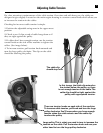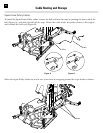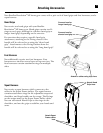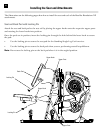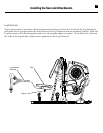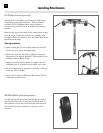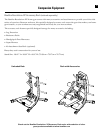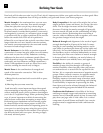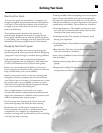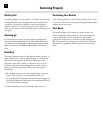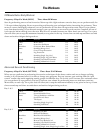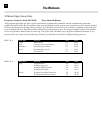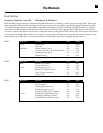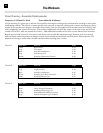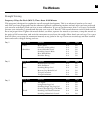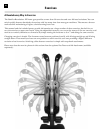
17
Defining Your Goals
Reaching Your Goals
To reach your goals you must follow a consistent, well
designed program that provides balanced development
to all parts of the body and includes both aerobic and
strength exercise. Only then will you meet your goals
safely and efficiently.
The workout routines found in this manual are
professionally designed and written to target specific
fitness goals. Should you not find one specific program
to your liking, you can design your own, based on sound
information and the principles found in this manual.
Designing Your Own Program
You may want to design your own personal program
specifically geared to your goals and lifestyle. Designing
a program is easy, as long as you follow these guidelines.
Understand fitness and its components: Improperly
designed programs can be dangerous. Take some time
to review this manual as well as other fitness guides.
Know your current fitness level: Before you start any
fitness program you should consult a physician who will
help you determine your current abilities.
Identify your goals: Goals are critical to choosing and
designing an exercise program that fits and enhances
your lifestyle, but so is strategy. It’s important not to rush
the process and try to accomplish too much too soon.
That will lead to setbacks and discouragement. Instead,
set a series of smaller achievable goals.
Select complementary exercises: Be sure to pair
exercises that address compound joint movements and
single joint movements. In addition, select exercises that
address complementary muscle groups.
Put first things first: During each session, first work
those muscle groups that need the most training.
Remember your cardiovascular component: Any
fitness program must contain a cardiovascular fitness
component to be complete. So complement your
resistance training with aerobic exercise such as walking,
running, bicycling or rowing.
Training variables: When designing your own program
there are several variables that, when mixed properly,
will equal the right fitness formula for you. In order to
find the best formula, you must experiment with several
combinations of variables. The variables are as follows:
• Training Frequency: The number of times you train
per week. We recommend daily activity but not daily
training of the same muscle group.
• Training Intensity: The amount of resistance used
during your repetition.
• Training Volume: The number of repetitions and sets
performed.
• Rest intervals: The time you rest between sets and the
time you rest between workouts.
Once you’ve established a base of fitness, follow these
basic principles:
• Isolate muscle groups: Focus work on specific muscle
groups.
• Progressive Loading: The gradual systematic increase
of repetitions, resistance and exercise period.



